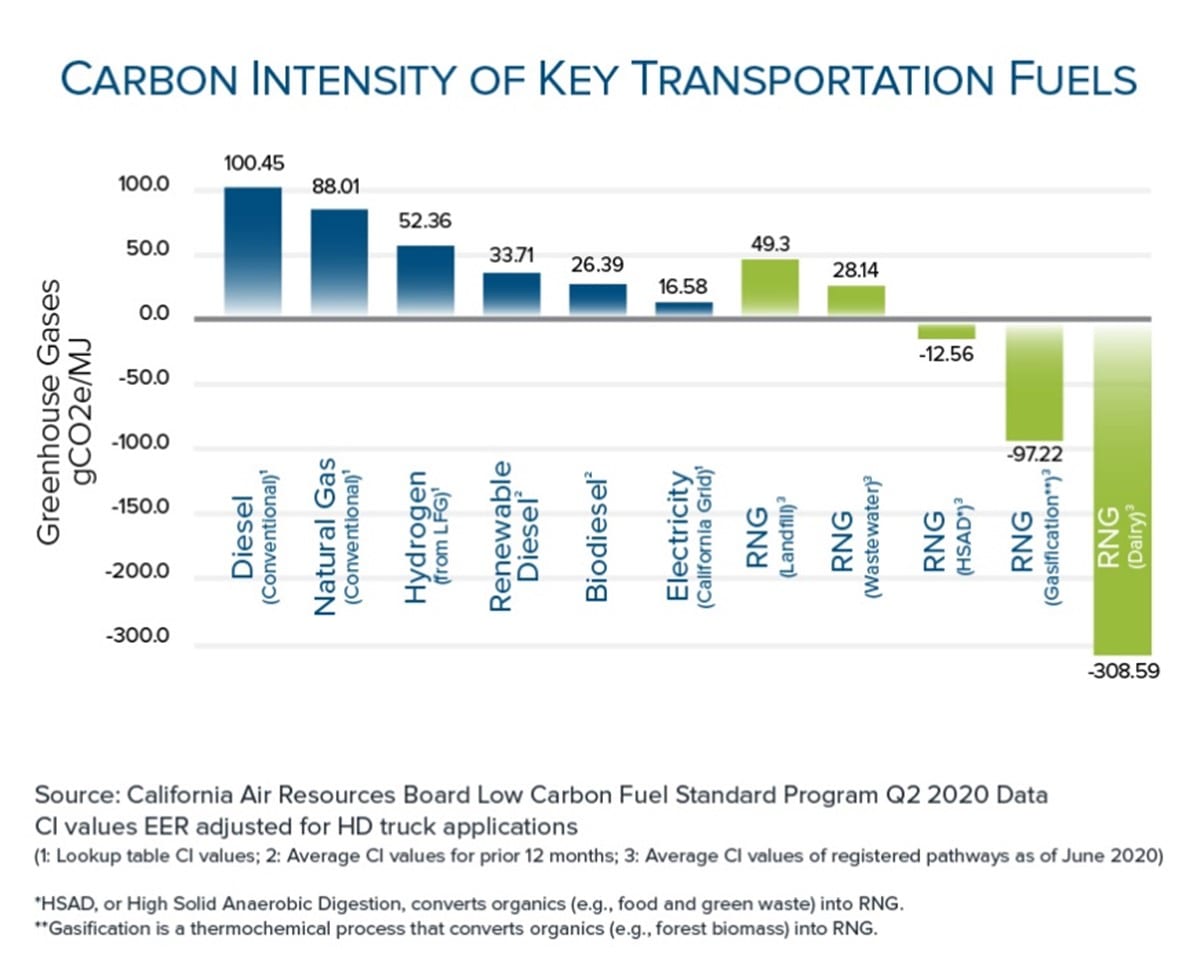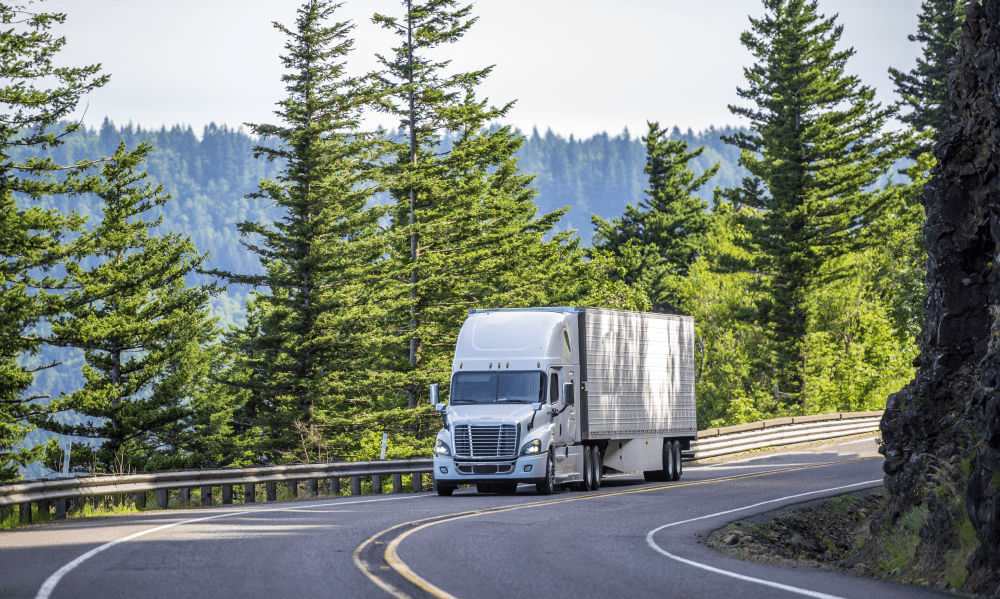In partnership with: Trillium

Corporate sustainability is a growing topic across every transportation sector. Fleets may be making long-term plans to purchase and deploy zero-emission vehicles, but regulators, internal stakeholders, and community members are looking to see substantial emission reductions now. Customers not only expect fleets to have a plan to reduce emissions, but also prove it with verifiable numbers.
With growing pressure for fleets to slash emissions and deploy zero-emission vehicles, can renewable fuels still fit into an organization’s sustainability strategy?
A Zero-Emission Work-in-Progress
While still years away from wide-scale commercial availability, zero-emission technology holds promise and is moving in the right direction for many sectors. The price of battery technology is decreasing, the availability of state and local funding is expanding and early adopter fleets have produced valuable learnings for the industry through pilot projects across the country.
Customers not only expect fleets to have a plan to reduce emissions, but also prove it with verifiable numbers.
Even with these factors aligning, deploying zero-emission vehicles is a long and complicated process. In fact, it is recommended that fleets begin to engage with their local utility as early as three years before they plan to deploy battery electric vehicles. In addition to a lengthy implementation timeline, electrification is also a very complex process, even for the most sophisticated fleets. Along with purchasing the actual vehicles comes applying for funding and incentives, identifying and installing charging infrastructure, creating a load profile and charging schedule with utility time-of-use rates, as well as training technicians, maintenance crew and staff.
And if these infrastructure and timeline challenges weren’t enough, the vehicle technology itself still poses a major challenge. While battery range is increasing, without widespread access to heavy-duty charging stations while out on routes, the battery electric vehicles currently available are only operationally suited for fleets with short, predictable, return-to-base routes and access to overnight charging.
BEVs available today work best for fleets with short, predictable, return-to-base routes and access to overnight charging.
Last, and certainly not least, estimated base prices for zero-emission vehicle are currently two to three times higher than natural gas options. While vehicle manufacturers—from startups to established OEMs—are offering a growing number of zero-emission vehicle models, substantial issues with vehicle supply and vehicle cost remain.
Looking Beyond Zero Emissions
In the meantime, corporate customers are still expecting, and now even requiring, fleets to provide substantial emission reductions today—not sometime in the distant future.
For these reasons and more, a fleet’s sustainability strategy does not need to focus on zero-emission vehicles alone. Natural gas vehicles can provide quantifiable emission reductions starting today while simultaneously helping fleets plan for the long term.
Leading by Example
Natural gas vehicles can provide quantifiable emission reductions today while simultaneously helping fleets plan for the long term.
Natural gas vehicles and renewable natural gas are already an essential part of the emission reduction strategies for fleets with some of the most ambitious sustainability initiatives in place.
Nationwide, innovative fleets are making unprecedented investments in renewable natural gas, scaling their purchases of natural gas vehicles and committing to continue purchasing RNG over the long term.
These same fleets have also set, and are continuing to meet, their ambitious greenhouse gas emission reduction goals while reporting to some of the most stringent carbon accounting frameworks available. This is not despite their use of natural gas vehicles and renewable fuels, but in large part because of their use of NGVs and RNG.
Following the Numbers
While these fleets are beginning to deploy zero-emission vehicles, it is natural gas vehicles fueled with RNG that are making their impressive emission reduction numbers possible.
NGVs fueled with RNG can provide greenhouse gas emission reduction benefits that are carbon-negative.
Because of RNG’s ultra-low-carbon potential, natural gas vehicles fueled with RNG can provide greenhouse gas emission reduction benefits that far exceed what zero-emission vehicles can provide. When sourced from certain feedstocks—for instance, waste from local dairy farms—renewable natural gas actually becomes carbon-negative, taking more carbon out of the environment than it produces.
When we capture carbon, in the form of methane emissions from decomposing organic waste, we prevent it from entering the atmosphere, warming the planet and contributing to the negative impacts of climate change.
As independently certified by the latest data from California’s clean air agency, the California Air Resources Board (CARB), the carbon intensity of RNG produced from in-state dairy waste is negative 308.59 gCO2e/MJ compared to the carbon intensity of California’s electricity grid (one of the cleanest in the nation) which is 16.58 gCO2e/MJ.

Learning from Sustainability Leaders
Fleets are under increasing pressure to reduce emissions and have a long-term plan that demonstrates those reductions. To meet the progressively more sophisticated inquiries from corporate customers, and to comply with global emission reduction frameworks, fleets must move well beyond efficiency improvements and compliance.
Natural gas vehicles fueled with low, and even negative, carbon renewable fuels such as RNG are an essential part of the sustainability strategies across the transportation sector – including the nation’s leading fleets. Not only is there room for renewable fuels such as RNG in every fleet’s sustainability plan, these fuels provide a path for substantial, quantifiable emission reductions that fleets can start implementing today.
To learn more about Trillium’s portfolio of fueling solutions visit www.loves.com/trillium or contact Cambell Jones at cambell.jones@trilliumcng.com.


